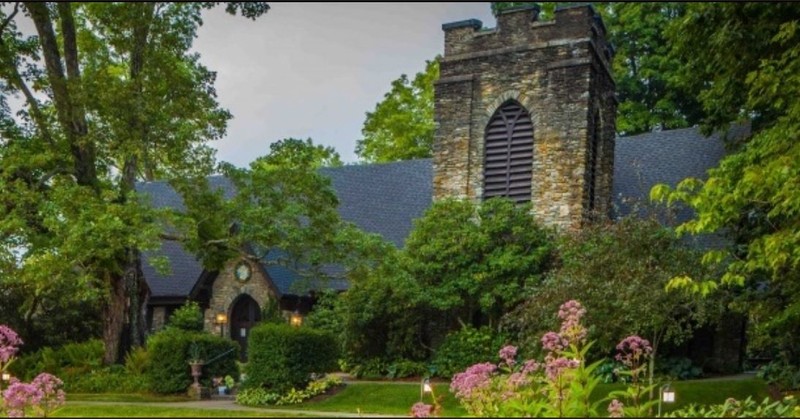St Mary of the Hills Episcopal Church
Introduction
Text-to-speech Audio
Images
St. Mary of the Hills Episcopal Church




Backstory and Context
Text-to-speech Audio
In 1890 Church of the Holy Spirit, the first Episcopal Church in Blowing Rock, was constructed on Dogwood Lane and opened for services in 1891. In 1917 Susie Parker Stringfellow led the congregations to build a new church. Financed by a generous donation from W. W. Stringfellow, Susie’s husband and owner of Chetola Estate, the building was completed in 1921. Sadly, Mrs. Stringfellow died in 1920, consequently the church was dedicated to the glory of God and the memory of Susie Parker Stringfellow. With the donation of Dangerfield’s ‘Madonna of the Hills,’ which won the prestigious Clark Prize, awarded for the best figure composition by the National Academy of Design in New York, the church was named St. Mary of the Hills.
A prominent figure in the early life of the church, Rev. William Savage, who was appointed head of the Valle Crucis Associate Mission, lived in Blowing Rock and was very active with the Church of the Holy Spirit. Savage lived on Main Street in the Mission House/Library which was constructed as a home for him and a lending library for the community. The building currently houses the Village Café and is on the National Register of Historic Places.
In addition to Elliott Dangerfield’s ‘Madonna of the Hills,’ Marjorie Daingerfield Howlett’s statue ‘The Offering’ can be found in the Mary Garden and Alex Hallmark’s sculpture “The Annunciation” is located on the gable facing Chestnut Drive and his 14 Stations of the Cross line the nave walls. The largest of the 4 bells is dedicated to the men from Watauga County who fought in World War I.
Sources
- Buxton, Barry. Burns, Jerry. Jones, Robert. Village Tapestry: The History of Blowing Rock. Boone, NC. Appalachian State University Press, 1989.
- https://stmaryofthehills.org/home
